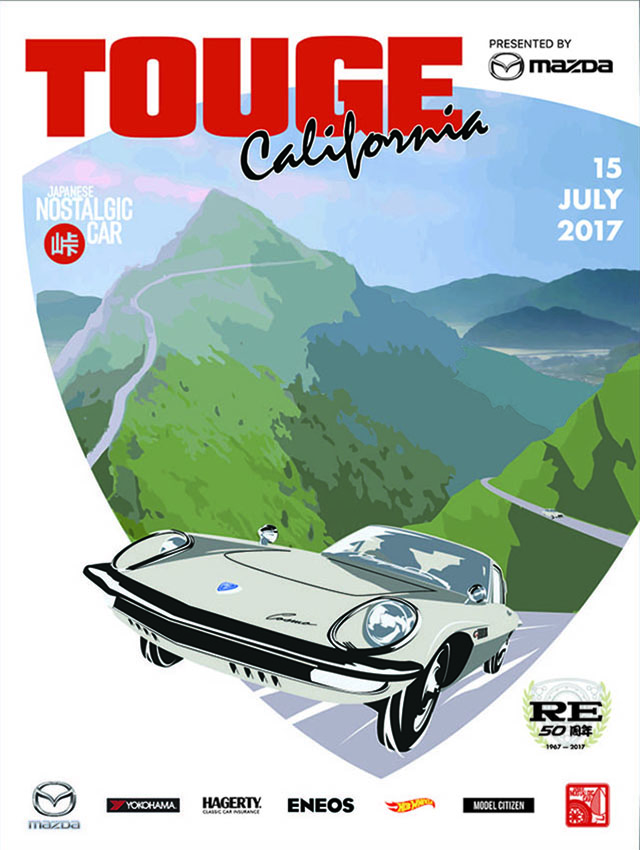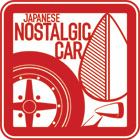Many apologies for the shortage of new posts in the past week or so, if you knew what we’ve been working on then you’d forgive us! Anyway, back to regular programming. A couple of weeks ago we did a piece on the short lived joint alliance between Nissan and Alfa Romeo. Certainly one of the most bizarre automotive joint ventures, but it is not the only weird JDM corporate marriage.
For a time in the 80s, Daihatsu had an arrangement with DeTomaso, to create an odd mix of JDM econo-hatch manufacturer with hardcore Italian supercar maker.
First, some history. DeTomaso is famous for the mid engined supercars which bear the name. I’m talking about the Pantera of course. But DeTomaso founder Alessandro DeTomaso was a businessman with many varied interests and one of them was the Innocenti car company.

 Since 1974 Innocenti sold a car called the Mini. Wearing crisp Bertone styling, it was no coincidence that it shared its name with the Austin Mini (as in Mini Cooper etc) because that is exactly what it was. Underneath the sharp Italian threads was the chassis and ancient pushrod engine of everyone’s favourite British subcompact. Innocenti was owned by Alessandro DeTomaso (see? I told you he gets around) and had an extraordinarily long production run and was made until 1993.
Since 1974 Innocenti sold a car called the Mini. Wearing crisp Bertone styling, it was no coincidence that it shared its name with the Austin Mini (as in Mini Cooper etc) because that is exactly what it was. Underneath the sharp Italian threads was the chassis and ancient pushrod engine of everyone’s favourite British subcompact. Innocenti was owned by Alessandro DeTomaso (see? I told you he gets around) and had an extraordinarily long production run and was made until 1993.
The Daihatsu connection comes in 1983, when the old pushrod Austin engine was replaced with a the 993cc Daihatsu 3 cylinder powerplant. The Turbo version of the little triple was also offered.

 And just like Nissan with Alfa Romeo, the glamorous Italian connection was too much to resist for staid old Daihatsu, and so the early 80s Charade Turbo (to the left and above) was also available in a DeTomaso version in Japan. Mechanically it was just the same as the regular 80ps 2 valve SOHC Charade Turbo, but it did gain some huge DeTomaso stickers down the sides!
And just like Nissan with Alfa Romeo, the glamorous Italian connection was too much to resist for staid old Daihatsu, and so the early 80s Charade Turbo (to the left and above) was also available in a DeTomaso version in Japan. Mechanically it was just the same as the regular 80ps 2 valve SOHC Charade Turbo, but it did gain some huge DeTomaso stickers down the sides!
But very soon, the tie-up with DeTomaso would get a lot more exciting than just stickers. In its day the Charade Turbo was a pretty credible rallycar in the under 1600cc classes. Ordinarily the 993cc Turbo would have competed in the 1600~2000cc class but Daihatsu produced a small run of 926cc versions so that it would sneak in under the 1600cc barrier once the FIA’s 1.7 equivalency ratio was applied. And so it wasn’t a big surprise when the most exciting fruit of the DeTomaso tie-up turned out to be a rally car: the 1986 926R prototype. Wearing a 926cc 120ps DOHC 4valve motor (basically a tweaked version of the twincam motor that would be seen in the next generation of Charades) it was mid-engined and had impossibly tough wide-body styling.

The intention of the 926R was that Daihatsu would make a small production run of them for Group B rallying. Having only 926cc, the Charade would have qualified for the under 1600cc class, where there was little competition besides the usual FWD hot hatches.

The 926R was a credibly engineered prototype and looked ready to run. But like so many exciting rally concepts in 1986 (like the Starion Turbo and the Mid4) the 926R project ground to a halt when the Group B formula of the World Rally Championship was cancelled in mid 1986, due to too many spectator and competitor fatalities from the huge speeds of the 600hp Group B monsters.
Group B was replaced by Group A, which would have required Daihatsu to make a production run of at least 5,000 mid engined Charades and so the project was quietly shelved. The 926R would have been the hottest Daihatsu ever (by quite a massive margin!). If they had produced the 926R, couldn’t you imagine slammed examples today with massively dished Work Meister S1s filling out those big flared arches? Such a shame it wasn’t produced…






Many years ago before my motoring tastes were adequately honed I actually test drove a Charade DeTomaso with the intention of buying one for my brother (this was the mid 90’s rounder G201S shape). The dealer handed over the keys for my brother and I to take it for a spin unaccompanied which I thought was pretty trusting at the time, but in retrospect I left him something with 4 times the power so I guess he wouldn’t have lost too much out of the deal had we done a runner.
Anyway, we trundled off and I thought that this 1.3L non turbo would somehow be supernaturally fast… I mean it was a DeTomaso, no one who made the PANTERA could make anything other than a vehicle forged by the devil himself, right? Maybe it was the 200kg worth of twin 6 foot passengers or maybe it was the blindingly obvious fact that 1.3L NA in a moderately light car just doesn’t work out mathematically for huge fun, but the car was a disappointment. A disappointment to my bother who was used to a 4 cylinder Mitsubishi Magna, so you can understand just how lack luster it was.
In a last ditch attempt to get some enjoyment out of the car at a set of lights my brother suggested I do a bit of a hard launch to see just what it could do. The clutch dropped and the revs leaped enthusastically to the right of the tacho and at last I thought we’d extracted some excitement out of the car. This was short lived, as the smell of burning clutch quickly permeated it’s way through the air vents. Now for anyone who’s ever burnt a clutch to a decent degree you’ll know that a) it’s a damn strong smell, and b) it takes forever to go away. The combination of these two is not so great when you then have to give the car back to the owner! We drove around for about a half an hour before it finally went away and we could finally hand the keys back innocently and get out of there.
Ultimately, while the DeTomaso name can still only be said in reverence after their efforts in the 70’s, the DeTomaso Charade was sadly a bit of a fizzer.
Ben
Pingback: A case for strange cars — The Garage
Bringing back the legend
https://www.facebook.com/groups/286407438772245/?ref=bookmarks